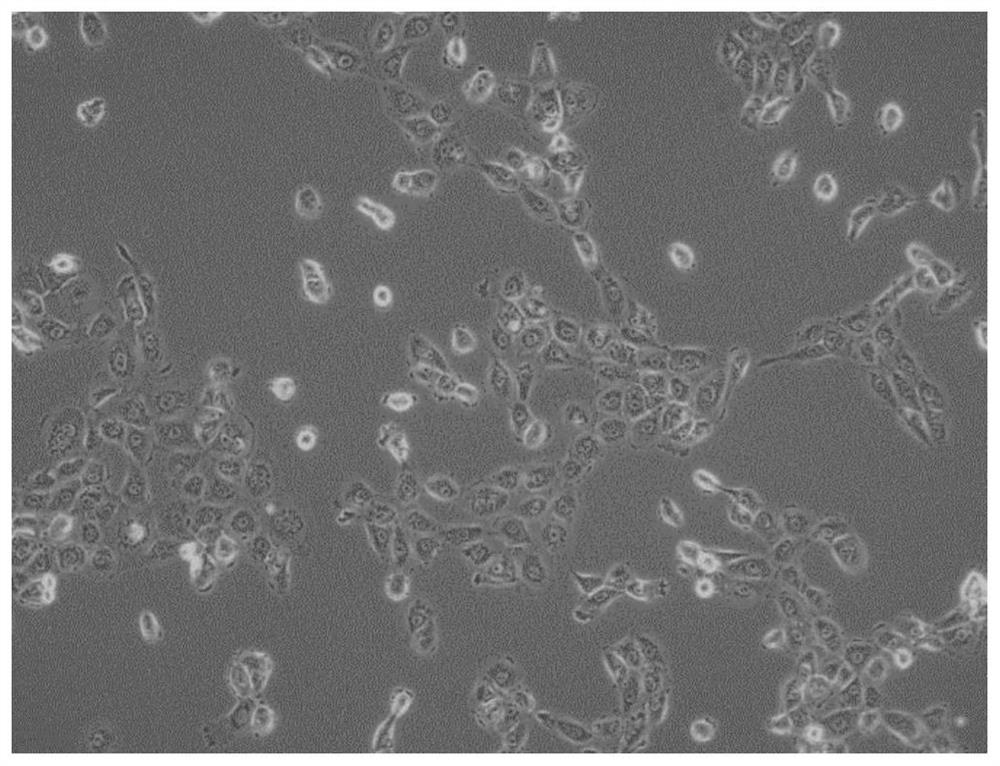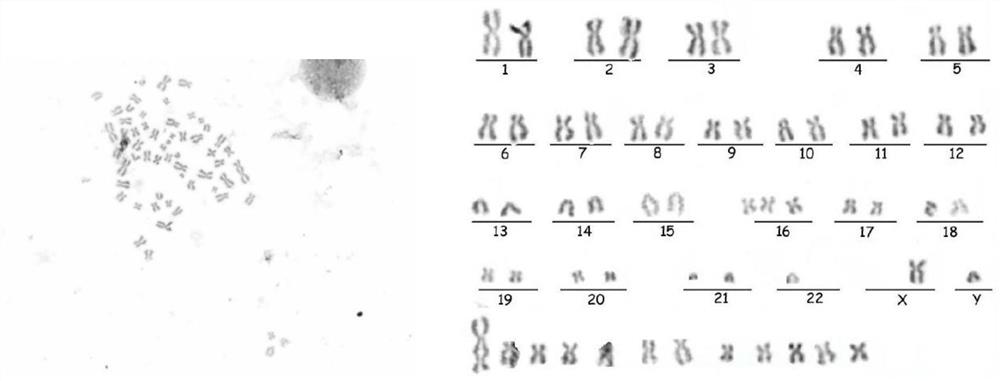Chinese lung squamous carcinoma cell line and application thereof
A technology of Chinese people and cancer cells, applied in the field of tumor biology, can solve problems such as ineffectiveness
- Summary
- Abstract
- Description
- Claims
- Application Information
AI Technical Summary
Problems solved by technology
Method used
Image
Examples
Embodiment 1
[0026] Isolation and processing of primary tumor cells
[0027] Primary tumor cells were isolated and cultured in a sterile environment from fresh tumor tissue blocks obtained from the animal room.
[0028] 1. First put the tumor tissue block into a 50ml centrifuge tube, shake and wash 5 times with PBS containing 10 times the double antibody until there is no blood. Place the tissue block in a Petri dish and remove excess tissue, such as fat or dead tissue.
[0029] 2. Move the tissue to another plate, and use a cross scalpel to cut it into about 1mm 3 The size of the organization block. Take a 70um filter and place it on a 50ml centrifuge tube. Gently pressurize the core of the syringe to force the tissue through the mesh into the culture medium, draw the culture medium and blow it through the mesh to flush the cells down.
[0030] 3. Add 5ml of trypsin / collagenase II to the culture dish of the remaining tissue pieces, digest in a 37°C incubator for 2 hours, and pipette e...
Embodiment 2
[0044] Example 2. Detection and identification of Chinese lung squamous cell carcinoma cell line SAHP1
[0045] 1. Cytomorphological observation of primary tumor cell lines
[0046] Under the light microscope, most of the tumor cells are spindle-shaped and oval-shaped, and a few are polygonal. Cells in the logarithmic growth phase spread well. SAHP1 spread randomly, and most of them were oval epithelioid cells, polygonal, and more regular in shape. Such as figure 1 shown.
[0047] 2. Immunofluorescence detection of cell marker proteins
[0048] 1) After trypsinizing the cells, suspend them in 1mL of complete culture medium, pipette fully to form a single-cell suspension, and perform cell counting. Insert 5×10 into 24-well plate as needed 4 cells. Before adding the cell suspension, add a small amount of medium to each well to make the slide and the culture dish stick together to reduce the entry of cells and prevent the slide from floating.
[0049] 2) Wash the slide with ...
Embodiment 3
[0056] Example 3. Karyotype analysis
[0057] Karyotype analysis to detect the characteristics of the karyotype and the number of chromosomes
[0058] 1) Add colchicine to the cells in the logarithmic growth phase, so that the final concentration of colchicine is 0.1ug / ml, and continue to culture for 3h;
[0059] 2) Digest the cells and transfer them to a 10ml pointed centrifuge tube, centrifuge at 1000rpm for 10min, remove the supernatant, add 0.075mol / L KC110ml, incubate at 37°C for 30min, then add fresh fixative solution (glacial acetic acid:methanol) to the centrifuge tube =3:1) 1ml, mix well, centrifuge at 1000rpm for 10min, discard the supernatant;
[0060] 3) Slowly add 10ml of fresh fixative solution, gently blow evenly, fix at room temperature for 20min, centrifuge, remove the supernatant, and fix again; centrifuge at 1000rpm for 10min, discard the supernatant;
[0061] 4) Add 250ul of fresh fixative solution, blow gently, drop a drop of suspension solution at a hei...
PUM
| Property | Measurement | Unit |
|---|---|---|
| Long trail | aaaaa | aaaaa |
Abstract
Description
Claims
Application Information
 Login to View More
Login to View More - R&D
- Intellectual Property
- Life Sciences
- Materials
- Tech Scout
- Unparalleled Data Quality
- Higher Quality Content
- 60% Fewer Hallucinations
Browse by: Latest US Patents, China's latest patents, Technical Efficacy Thesaurus, Application Domain, Technology Topic, Popular Technical Reports.
© 2025 PatSnap. All rights reserved.Legal|Privacy policy|Modern Slavery Act Transparency Statement|Sitemap|About US| Contact US: help@patsnap.com



